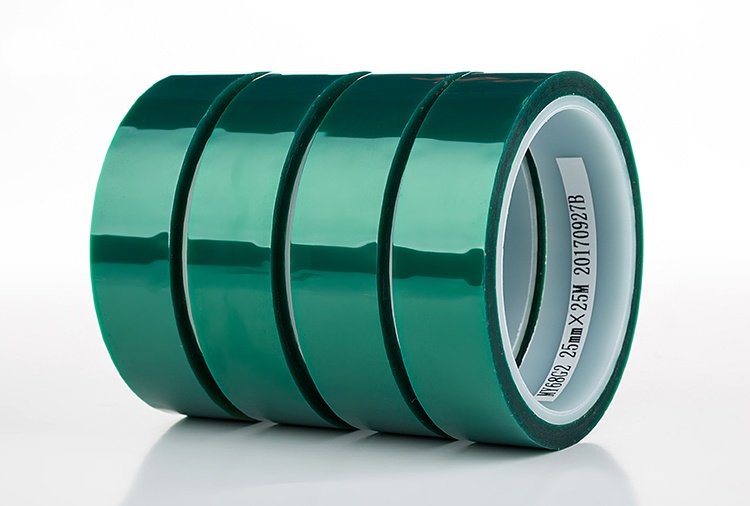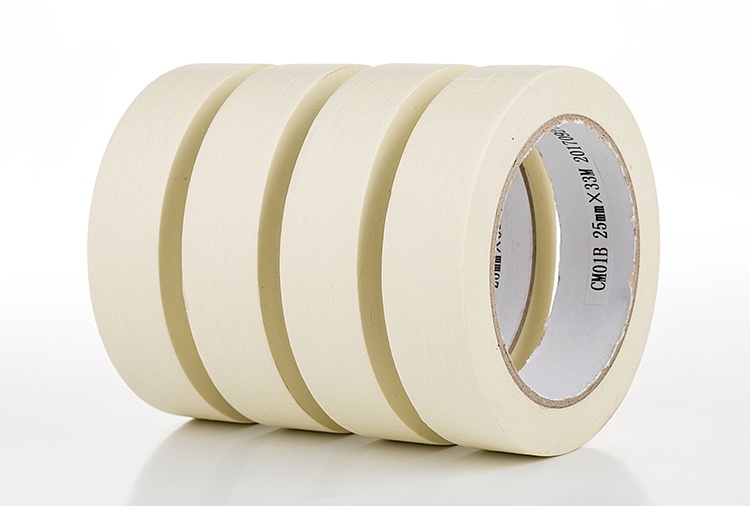Masking tape
Suitable for electroplating, painting, powder coating and masking. No residual glue will be removed after high temperature.
Masking tape
Suitable for electroplating, painting, powder coating and masking. No residual glue will be removed after high temperature.
High-temperature masking tapes are primarily used in the electronics industry. Their temperature resistance typically ranges from 120°C to 260°C. They are commonly used for masking during electroplating, powder coating, and paint baking, as well as for securing electronic components during manufacturing, printed circuit boards, and for high-temperature processing. Examples of high-temperature masking tapes include polyimide high-temperature tapes, high-temperature masking tapes, and polyester green high-temperature tapes.
Production Process Flow
From raw materials to finished product, every step is rigorously controlled to ensure consistent and reliable performance.
Production begins with the preparation of two core raw materials:
Backing Material: The appropriate film is selected based on the tape’s end-use and temperature rating. The most common include:
PET Film (Polyester): Used for medium-high temperature applications (approx. 180°C), such as powder coating masking.
PI Film (Polyimide): Used for higher temperature applications (approx. 260°C), such as protecting circuit boards during wave soldering.
Adhesive: High-temperature tapes typically use a Silicone pressure-sensitive adhesive because it maintains its tack at high temperatures and can be removed cleanly without leaving residue after cooling.
Raw silicone rubber, tackifying resins, cross-linking agents, catalysts, and other functional additives are mixed and stirred in a specialized reactor according to a precise formula. A solvent (such as toluene) is often used to adjust the viscosity of the adhesive to make it suitable for the subsequent coating process. This step is critical for the final adhesion, temperature resistance, and residue-free properties of the tape.
The prepared backing film is mounted on a large coating machine. Using a precision coating head (such as a knife coater or gravure roller), the formulated liquid silicone adhesive is applied evenly and smoothly to one side of the film. The thickness of the coating is strictly controlled, typically only a few tens of microns, as its uniformity directly affects the consistency of the tape’s performance.
The coated film immediately enters a multi-zone drying tunnel (oven) that can be tens of meters long.
Drying Stage: In the initial, lower-temperature zones, the solvent is evaporated and recovered.
Curing Stage: In the subsequent, higher-temperature zones, the cross-linking agent in the adhesive undergoes a chemical reaction catalyzed by the catalyst, forming a stable three-dimensional network structure. This process, known as cross-linking or curing, gives the adhesive its final strength, cohesion, and high-temperature resistance.
The output from the production line is a very wide (often over 1 meter) and long (several thousand meters) “master roll” or “jumbo roll”. Based on customer orders, a high-speed slitting machine is used to precisely cut the master roll into the required narrow widths (e.g., 10mm, 20mm), which are then rewound onto standard paper or plastic cores to form the final product rolls.
Strict quality control checks are performed at various stages of the production process and on the finished product. Key inspection items include:
Thickness: Ensuring the thickness of the backing and adhesive layer meets specifications.
Adhesion: Testing the 180° peel strength of the tape on a standard steel plate.
Temperature Resistance: Placing a sample at a specified high temperature for a period, then testing for changes in adhesion and any residue.
Appearance: Inspecting the tape surface for defects such as bubbles, impurities, or scratches.
Qualified finished tape rolls are packaged, typically in individual shrink-wrap or sleeve packaging, and then placed in cartons. The packaged products are labeled with specifications, batch numbers, and other information before being sent to the warehouse for storage and shipment.
Masking tape Series Specification Sheet
| Series | Product code | Adhesive | Material | Standard size) | Tack (N) | Adhesion (N/25mm) | Tensile strength (N/25mm) | Temperature resistance (℃) | ||
| Thickness (mm) | Width (mm) | Long (m) | ||||||||
| PI silicone tape | KA06 | Silicone | PI | 0.06 | 500 | 33 | 1↑ | 6↑ | 115↑ | 250 |
| PI silicone tape | KA08 | Silicone | PI | 0.08 | 500 | 33 | 4↑ | 6↑ | 115↑ | 250 |
| Green high-temperature tape | MY35G | Silicone | PET | 0.05 | 1000 | 33 | 1↑ | 5↑ | 70↑ | 200 |
| Green high-temperature tape | MY68G | Silicone | PET | 0.06 | 1000 | 33 | 2↑ | 7↑ | 40↑ | 200 |
| Green high-temperature tape | MY57G | Silicone | PET | 0.07 | 1000 | 33 | 1↑ | 5↑ | 40↑ | 200 |
| Green high-temperature tape | MY58G | Silicone | PET | 0.08 | 1000 | 33 | 2↑ | 8↑ | 40↑ | 200 |
| Masking paper tape | CM8T | Silicone | Masking paper PET | 0.22 | 980 | 33 | 9↑ | 5↑ | 180↑ | 200 |
| Masking paper tape | CM8K | Silicone | Masking paper PI | 0.22 | 980 | 33 | 9↑ | 5↑ | 180↑ | 250 |
| Masking paper tape | CM01 | Rubber | Masking paper | 0.13 | 1250 | 33 | 10↑ | 6↑ | 30↑ | 80 |
| Masking paper tape | CM05 | Rubber | Masking paper | 0.14 | 980 | 33 | 10↑ | 6↑ | 40↑ | 100 |
Technology Showdown: Tape vs. Gaskets
The primary alternative to tape is a pre-formed gasket. While both seal the lens mold, their differences in flexibility, automation compatibility, and failure modes have profound impacts on manufacturing efficiency and cost.
Functions, Uses, and Applications
Masking tape is an engineered adhesive solution for demanding industrial processes. Its core function is to provide temporary surface protection and sharp paint lines during high-heat applications, removing cleanly without residue.
Quality Standards & Certifications
Jiujiang Leadcomp Co., Ltd. is committed to delivering the highest quality products, a promise backed by strict internal standards and authoritative third-party certifications.


